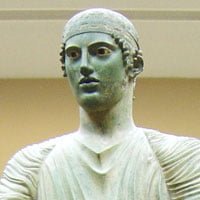60-day returns • free shipping on USA orders $129+


This spring I am learning to treasure a certain Charlotte Mason phrase more deeply than ever. Charlotte talked about recognizing “the familiar face of a friend.” As we travel to various homeschool conventions across the country, it is a joy to meet new people; but there is something about recognizing the familiar face of a friend that warms the heart and refreshes the spirit like nothing else can. And the best part is that the new friends we meet this year will be familiar faces next year!
Charlotte well knew the advantages of forming those relations, of making friends that can be recognized across the room. In fact, she used that terminology to describe true learning. When describing how young readers should learn new words, she explained that they should recognize that new word anywhere, as the familiar face of a friend peeking out of a crowd.
She heartily believed that Education is the Science of Relations. It is only as we form connected relations with God and the people and things in this world—past and present—that we truly learn and grow and are educated.
Relating to History through Artifacts
One of the ways that she encouraged those relations was by giving her students The British Museum for Children, a wonderful book by Frances Epps that brought the artifacts from the past to her schools. The British Museum houses a lovely pageant of history in its rooms full of treasures; but Charlotte realized that not every child would be able to make a trip to see the artifacts for himself. So she shared with her students a collection of pictures and descriptions of those artifacts.
This little collection encouraged two types of relations. First, when students read about people in history, they were able to see the artifacts that those people actually handled. When they read about King Jehu, for example, they could see the actual obelisk of the Assyrian king who conquered him. They saw for themselves the inscription of Jehu kneeling and paying tribute to that king. That physical object from the past helped them form a relation with those historical people. And students were encouraged to draw the artifacts in their Book of Centuries to further strengthen that bond. Second, if the student later had an opportunity to go to the museum, that relation would be still further strengthened as the child recognized the familiar face of the obelisk, peeking out at him from the crowd.
“The study of ancient history which cannot be contemporaneous we approach through a chronologically-arranged book about the British Museum (written for the scholars of the P.U.S. by the late Mrs. W. Epps who had the delightful gift of realising the progress of the ages as represented in our great national storehouse). I have already instanced a child’s visit to the Parthenon Room and her eager identification of what she saw with what she had read, and that will serve to indicate the sort of key to ancient history afforded by this valuable book. Miss G. M. Bernau has added to the value of these studies by producing a ‘Book of Centuries’ in which children draw such illustrations as they come across of objects of domestic use, of art, etc., connected with the century they are reading about. This slight study of the British Museum we find very valuable; whether the children have or have not the opportunity of visiting the Museum itself, they have the hope of doing so, and, besides, their minds are awakened to the treasures of local museums” (Vol. 6, pp. 175, 176)
A relation formed. A familiar face. These are the hallmarks of truly knowing.
It is with this idea in mind that our new The Stuff They Left Behind portfolios were created. We like to think of them as our modern-day equivalent to the museum book that Charlotte used. We hope the collections of pictures, descriptions, and discussion questions will help your students (and you) form relations with the people of the past. May you soon recognize many familiar faces peeking out from the pages of history!
